The Ultimate Guide to Rabbit Hutch DIY: Building Your Own Outdoor
Let me guess, you want to give your furry friend the ultimate luxury living space but don't want to break the bank on a pre-made rabbit hutch DIY?

Key Takeaways:
- Learn how to construct a sturdy and comfortable rabbit hutch DIY style.
- Discover the essential features for a safe and functional outdoor rabbit hutch.
- Gain insights into the best materials and designs for different rabbit hutch types.
Rabbits are delightful pets that require a safe and comfortable home to thrive. Whether you're raising meat rabbits or keeping them as furry friends, building your own rabbit hutch can be a rewarding DIY project. This comprehensive guide will walk you through the steps to create the perfect abode for your bunnies, from a basic hutch to a double decker hutch with all the amenities.
Understanding the Basics of Rabbit Hutch Design
Before diving into the construction process, it’s crucial to understand what makes a good rabbit hutch. A well-designed hutch should provide ample room for your rabbits to move around, sleep, and eat. It should also protect them from predators and harsh weather conditions. The use of mesh and a solid wooden frame are common in most designs, ensuring your rabbits safe and secure. You can build outdoor rabbit hutches, bunny hutches with a rabbit run if you like.
It's important to choose a design that is suitable for your specific outdoor setting, the number of rabbits you have, and your experience level.
Choosing the Right Materials for Your DIY Rabbit Hutch
The materials you choose for your rabbit hutch DIY project will determine its durability and functionality. A materials list typically includes untreated wood for the frame, mesh for ventilation and predator proofing, and hardware cloth for the floor to prevent rabbits from digging out. It’s also wise to consider materials like PVC pipe for the frame of an a-frame rabbit tractor, which can be moved around your yard.
Selecting the right tools and materials for the job is essential to ensure your rabbit hutch is sturdy and long-lasting.
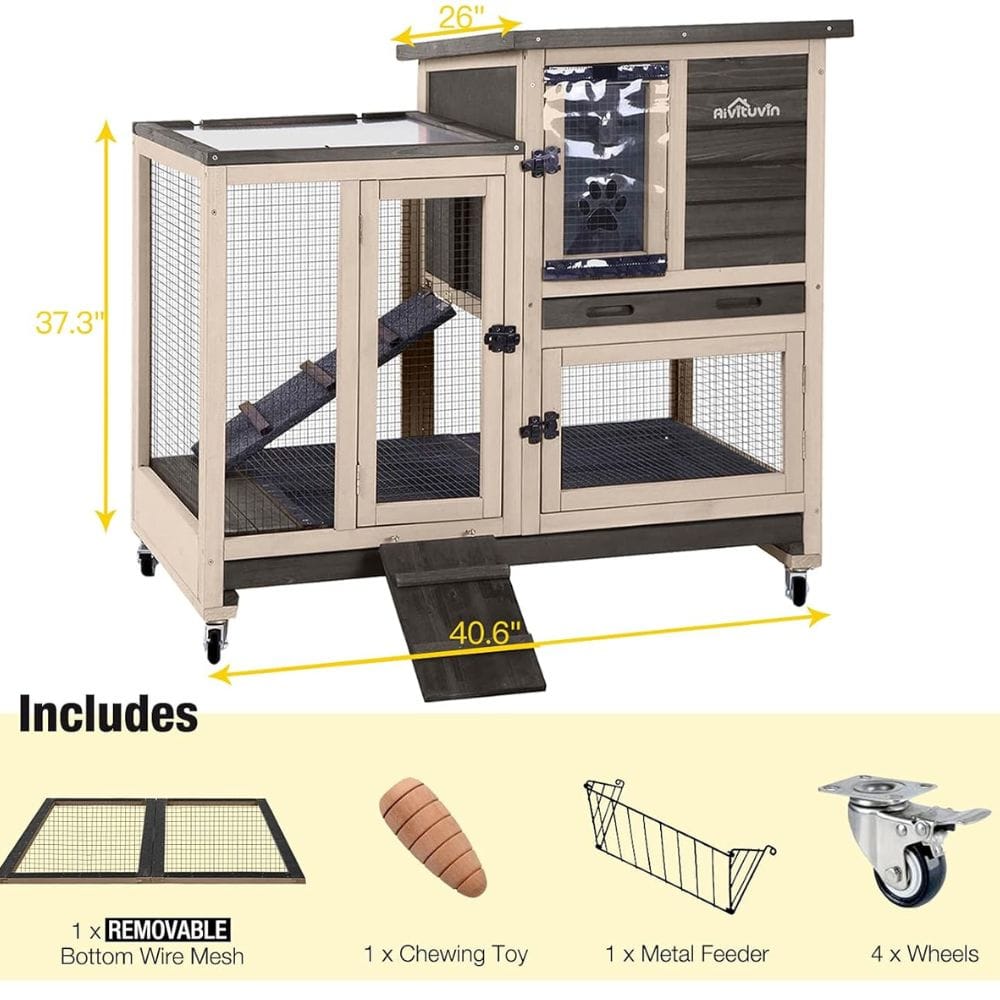
Planning Your Rabbit Hutch DIY Project
Before you start building, you’ll need a set of rabbit hutch plans. These plans should include a cut list, dimensions for each section, and a step-by-step guide to ensure a smooth assembly process. A clear diagram is also helpful for visualizing the assembly process and ensuring all parts fit together correctly. It’s important to decide whether you want an outdoor rabbit hutch or an indoor bunny hutch, as the requirements for each can differ significantly, especially in terms of size and protection from the elements. Remember to wear gloves & eye protection. Safety first!
The Foundation: Setting Up the Frame
The foundation of any rabbit hutch is its frame. Downloadable plans or instructions can be accessed via a file. Start by cutting your wooden pieces according to your cut list and then drill pilot holes to prevent the wood from splitting. Assembling the frame with screws will provide a sturdy base for the rest of the hutch. Having another person to help hold the pieces in place can make the assembly process smoother and safer. Ensure that the legs are strong enough to support the hutch, especially if you’re planning a two-story or double decker hutch.
Adding Walls and Doors for Security and Easy Access
Once the frame is set, it’s time to add walls and doors. Large doors are essential for easy cleaning and easy access to your rabbits. If you’re building a double door rabbit hutch, make sure that the doors are secure but also convenient for you to open. The point here is that both easy access and security are crucial for effective rabbit hutch design. The walls should be made of solid materials to keep the rabbits safe from predators and the weather.
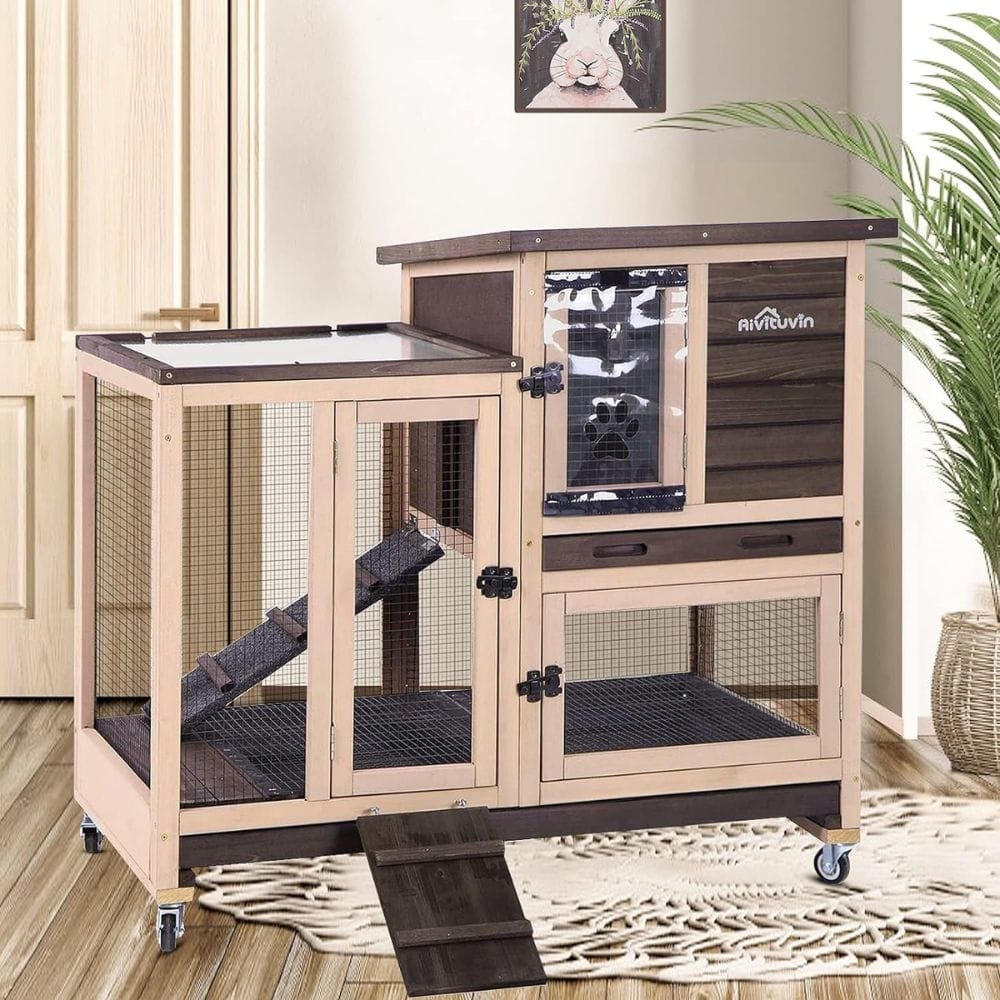
Roofing and Protection from the Elements
A solid roof is crucial for keeping your rabbits dry and comfortable. Whether you opt for a sloped roof for water runoff or a flat roof with an overhang, make sure it’s well-constructed and secure. Materials like shingles or waterproof plywood can be used to ensure that the hutch remains dry inside. A well-constructed roof is especially important for protecting rabbits from rain and snow during the winter.
Wire Mesh and Hardware Cloth: Ensuring Ventilation and Safety
Proper ventilation is vital for your rabbit's health, which is why incorporating wire mesh into your design is important. Extra ventilation rabbit hutch designs often include wire on the sides or top to allow for air circulation. Hardware cloth can be used for the floor to keep rabbits from digging out while still allowing droppings to fall through for easier cleaning.
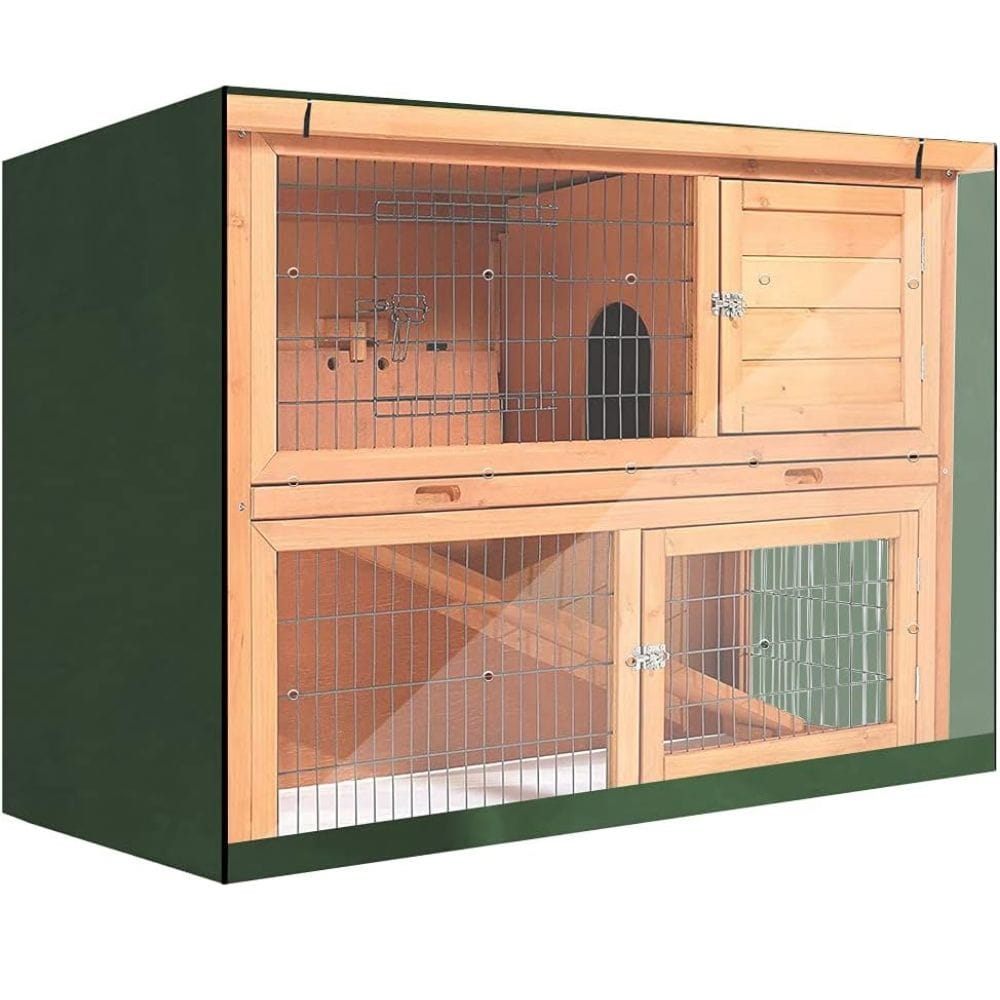
The Interior: Sleeping Quarters and Nesting Box
Inside the hutch, your rabbits will need a cozy place to sleep that reflects the love and care you have for them, and, if you’re breeding, a nesting box. The sleeping quarters should be enclosed and filled with soft bedding. For the nesting box, ensure it’s large enough for the mother and her kits and is placed in a quiet corner of the hutch.
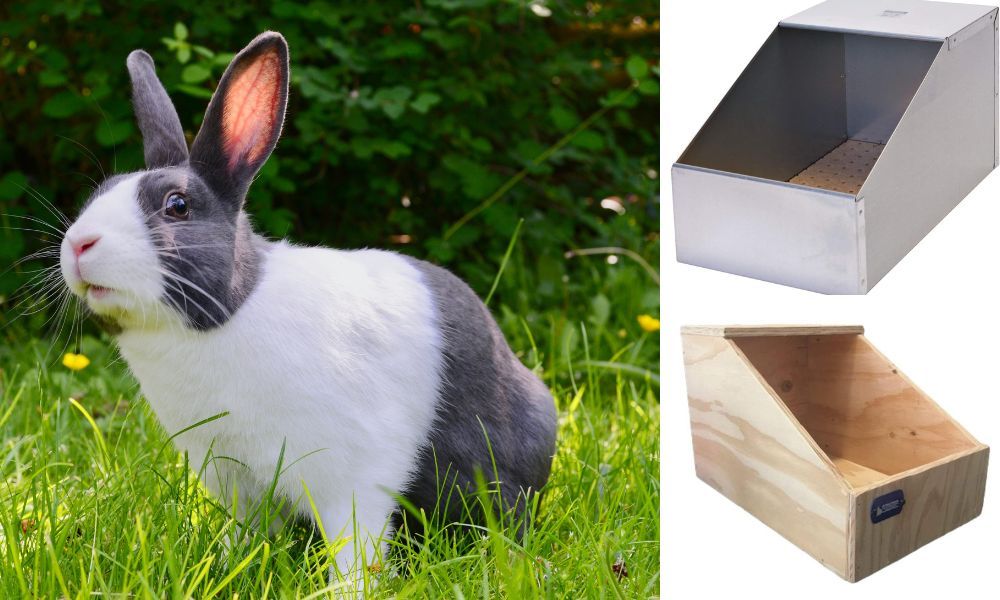
Integrating Technology: Smart Features for Your Rabbit Hutch
In the age of smart homes, why not consider adding some tech to your rabbit hutches? Imagine a rabbit house equipped with temperature sensors to ensure your furry friends always feel safe and comfortable, regardless of the weather. By incorporating simple devices, such as a digital thermometer, you can monitor conditions inside the hutch and make adjustments as needed. This is particularly important when raising rabbits in areas with extreme climates.
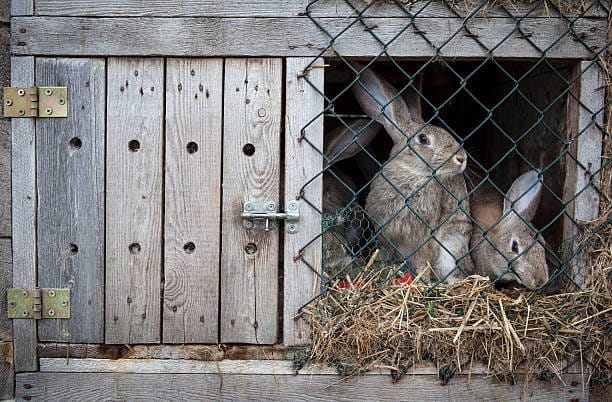
Furthermore, advancements in technology can help you keep an eye on your rabbits when you're not around. Installing a small, pet-safe camera within the hutch allows you to check on your rabbits from your smartphone or computer. This can be especially reassuring if you raise meat rabbits and need to monitor their health and growth closely. With these smart additions, your outdoor hutch becomes not just a home, but a high-tech haven for your rabbits.
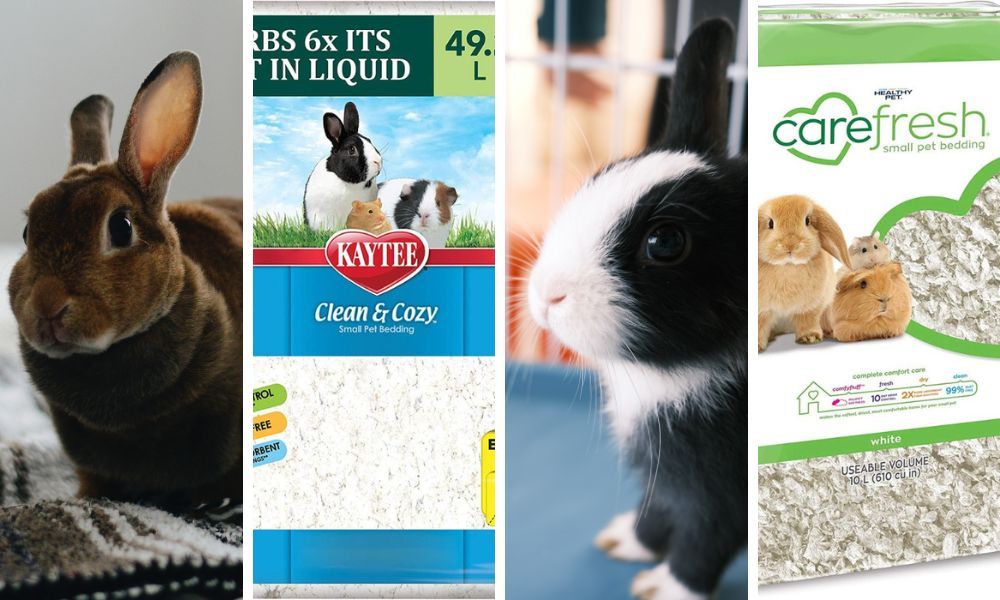
Optimizing for Durability: Weatherproofing Your Rabbit Hutch
When it comes to outdoor plans for your rabbit hutch, weatherproofing is a critical step to ensure the longevity of your structure and the comfort of your furry friends. Rabbits are sensitive to harsh weather conditions, so it’s essential to consider how your hutch will stand up to the elements. Start by selecting weather-resistant materials such as treated wood or heavy-duty plastic for the frame and walls. Additionally, consider a sloped roof design to prevent water accumulation and use durable paint or a sealant to protect the wood from moisture.
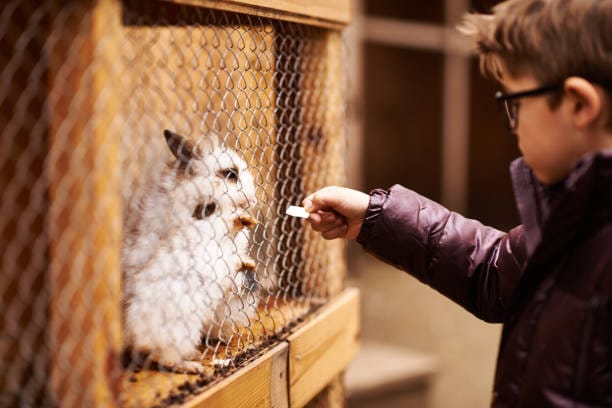
Incorporating wire cages into the design can also contribute to weatherproofing. The wire allows for proper ventilation, which is vital during hot and humid days, while keeping the rabbits safe from predators. When installing wire mesh, make sure to use galvanized or vinyl-coated options to prevent rusting. Drilling pilot holes before screwing the wire in place can prevent wood from splitting and ensure a secure fit. Remember, a well-protected hutch means a happy and healthy rabbit, no matter what the weather brings.
While some weatherproofing steps may cause a minor inconvenience during construction, the added comfort and safety for your rabbits make it well worth the effort.
Selecting the Ideal Location for Your Rabbit Hutch
When it comes to building a rabbit hutch, selecting the ideal location is as crucial as the construction itself. You want to ensure that your furry friends are comfortable, safe, and happy in their new home. The perfect spot should provide a balance of sunlight and shade, protecting rabbits from harsh weather while offering enough light for their well-being. Consider placing the hutch in a quiet area of your garden where there’s minimal noise and disturbance. This will help reduce stress for the rabbits and make the cage a serene haven for them to thrive.
Moreover, the location should be easily accessible for you to perform regular cleanings and to interact with your rabbits. Accessibility is key to maintaining a healthy environment inside the cage. The best location for your hutch may vary depending on your local climate, garden layout, and the specific needs of your rabbits. Ensure that the chosen spot has a level ground to prevent the hutch from tilting, which could potentially harm your rabbits or cause structural issues. Also, think about the proximity to your house for convenience during feeding times and health checks. A well-thought-out location will contribute significantly to the overall success of your DIY rabbit hutch project. Do not forget to add hay feeders for your rabbit too.
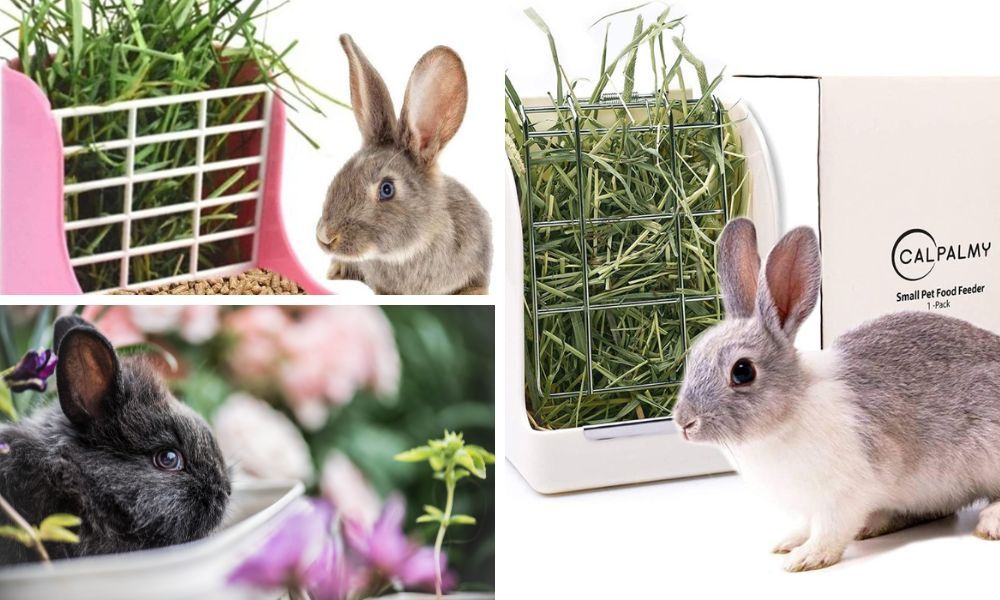
Incorporating Eco-Friendly Practices in Rabbit Hutch Construction
Building an eco-friendly rabbit hutch not only benefits the environment but also promotes a healthier lifestyle for your rabbits. Start by sourcing sustainable materials for the cage construction. Recycled wood, for instance, is an excellent choice that reduces waste and adds character to your hutch. However, using reclaimed wood or other eco-friendly materials may present some problems, such as fitting or finishing, but these can often be solved with a bit of creativity. When selecting paints and finishes, opt for non-toxic, water-based products to ensure the safety of your rabbits and the environment. These small choices can make a big difference in minimizing the ecological footprint of your DIY project.
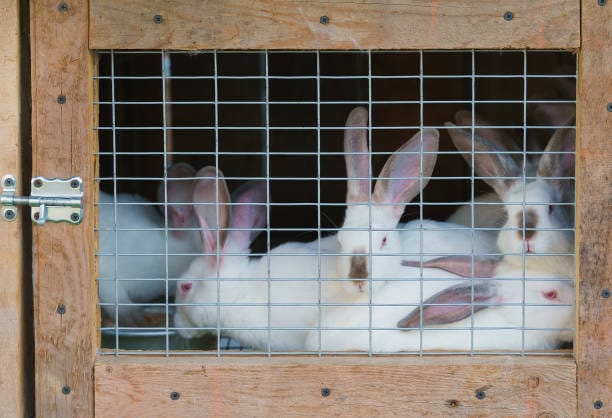
In addition to using eco-friendly materials, consider integrating green practices into the daily upkeep of the hutch. Implementing a composting system for rabbit waste is a fantastic way to recycle nutrients back into your garden. Not only does this reduce landfill contributions, but it also provides you with rich fertilizer for your plants. By embracing these eco-conscious methods, you’ll create a sustainable habitat that aligns with nature, ensuring that your rabbit’s cage is not only a cozy retreat but also a testament to environmentally responsible living.
Enhancing Your Rabbit Hutch with Multi-Purpose Additions
While building your rabbit hutch, why not consider adding multi-purpose features that can benefit both you and your pets? For instance, incorporating a storage compartment can help you keep rabbit supplies, such as food and bedding, conveniently close while maintaining a tidy space. This can be achieved by adding a hinged roof or a pull-out drawer at the bottom of the hutch. Not only does this save space, but it also makes it easier to access your rabbit care essentials.
Another innovative addition could be a built-in dog kennel adjacent to the rabbit hutch, especially if you have other plans to house multiple pets in proximity. This not only maximizes your outdoor space but also allows for a harmonious living situation between your rabbits and dog, provided that safety measures are in place to keep the rabbits secure. When designing this feature, ensure that there is a robust barrier between the two areas and that the dog has its own space to relax without causing stress to the rabbits. Integrating these multi-purpose elements can make your rabbit hutch not just a home for your rabbits, but a functional part of your backyard ecosystem.
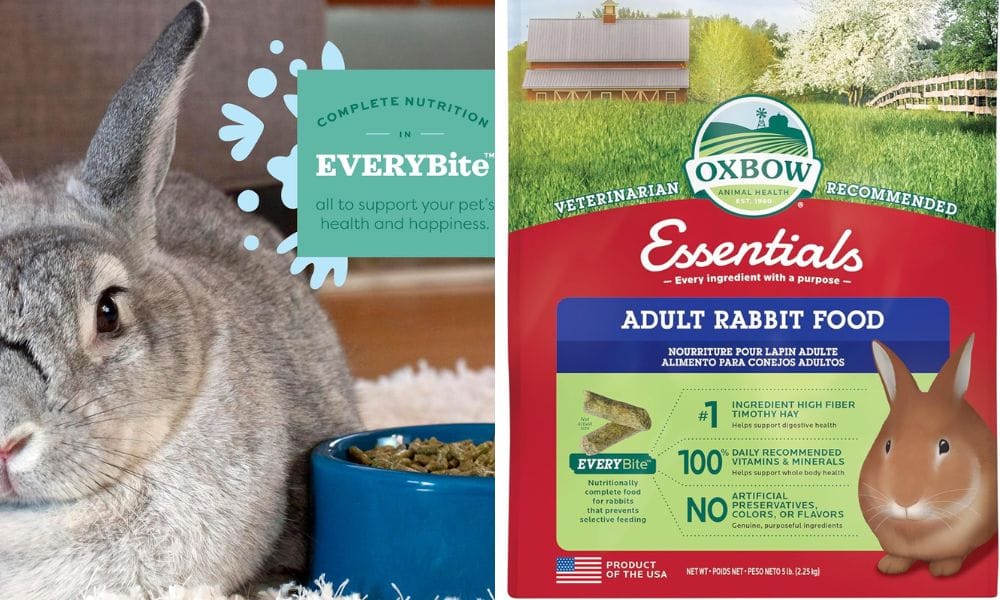
The Community Approach: Building a Rabbit Village
When planning your rabbit hutch plan, consider the social nature of rabbits. If you’re looking to house two rabbits or more, why not design an interconnected community instead of a single hutch? Think of it as a rabbit village, where each own hutch is like a separate home within a neighborhood. This setup can include shared play areas and multiple levels, creating a dynamic environment that encourages natural behaviors.
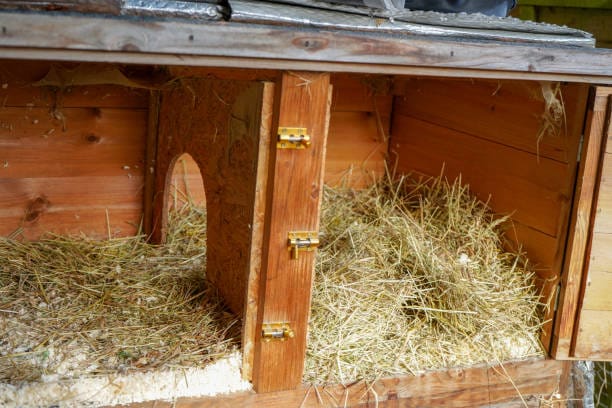
By designing a multi-unit structure with two stories or more, you can save space while still providing ample room for each rabbit. This concept is similar to a chicken coop design, where individual nesting areas are connected to a larger communal space. Ensure each unit is predator proof and has its own food and water supply. This approach not only maximizes space but also fosters a sense of community among your rabbits, allowing them to socialize and live harmoniously together. A well-designed rabbit village creates a nice environment for your rabbits to interact and thrive.
Customizing Your Hutch: Extras and Personal Touches
Once the basics are in place, you can add extras to make your rabbit hutch even more comfortable and convenient. Consider adding a feeding area, a water bottle holder, or even a small rabbit hutch within the larger structure for privacy. You can also personalize your hutch by painting it or adding decorative elements. Customizing your hutch gives you the opportunity to focus on the details that will make it uniquely suited to your rabbits' needs.
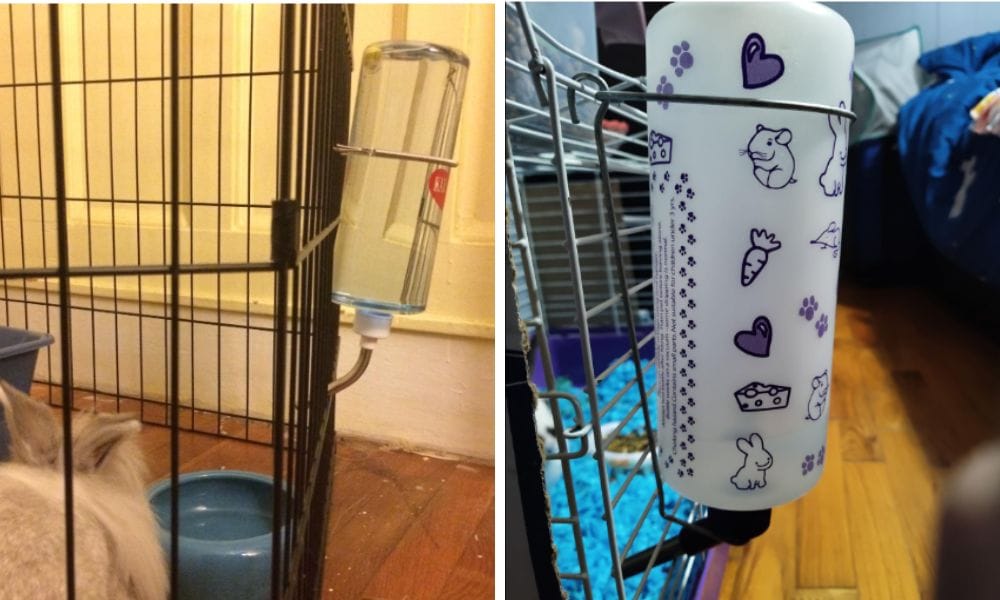
Predator Proofing Your Outdoor Rabbit Hutch
If your hutch is outdoors, predator proofing is essential. This means reinforcing areas with extra wire mesh, ensuring that all doors and openings are secure, and possibly adding a skirt around the hutch to prevent animals from digging underneath.
Sometimes, a bit of trial and error is necessary to identify and reinforce any weak points in your predator proofing.
Making Cleaning Easier: Design Tips for Maintenance
A well-designed rabbit hutch should make cleaning easier. This can be achieved by having large doors for easy access, removable trays for waste collection, and floors made of hardware cloth that allow droppings to fall through. Some rabbit hutch designs even include a sloped floor to direct waste to a specific area for easy removal.
Regular cleaning is an essential part of rabbit care, and owners must accept this responsibility to ensure a healthy environment.
Raising Meat Rabbits: Considerations for Hutch Size and Features
When raising meat rabbits, the hutch design may need to accommodate more rabbits and provide space for growth. A large hutch with multiple compartments can house multiple rabbits comfortably. Additionally, features like a double decker hutch can maximize space while still providing enough room for each rabbit.
For first-time breeders, the space and features required for raising meat rabbits may be more than expected.
A Frame Rabbit Tractor: A Mobile Solution
For those who want to give their rabbits access to fresh grass while keeping them safe, an a-frame rabbit tractor is a great solution. This type of hutch is designed to be moved around your yard, allowing rabbits to graze on fresh grass through the wire bottom while protecting them from predators.
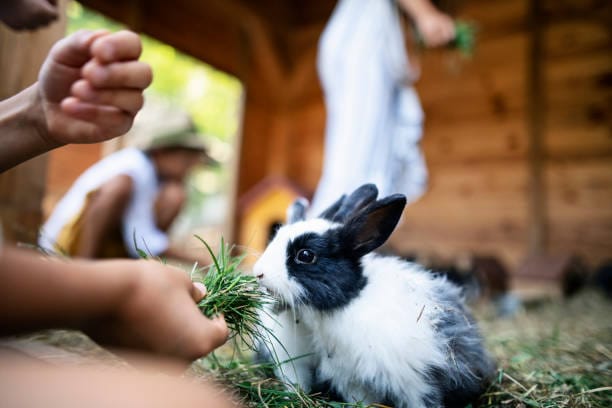
Raising Meat Rabbits: Considerations for Hutch Size and Features
When raising meat rabbits, the hutch design may need to accommodate more rabbits and provide space for growth. A large hutch with multiple compartments can house multiple rabbits comfortably. Additionally, features like a double decker hutch can maximize space while still providing enough room for each rabbit.
A Frame Rabbit Tractor: A Mobile Solution
For those who want to give their rabbits access to fresh grass while keeping them safe, an a-frame rabbit tractor is a great solution. This type of hutch is designed to be moved around your yard, allowing rabbits to graze on fresh grass through the wire bottom while protecting them from predators.
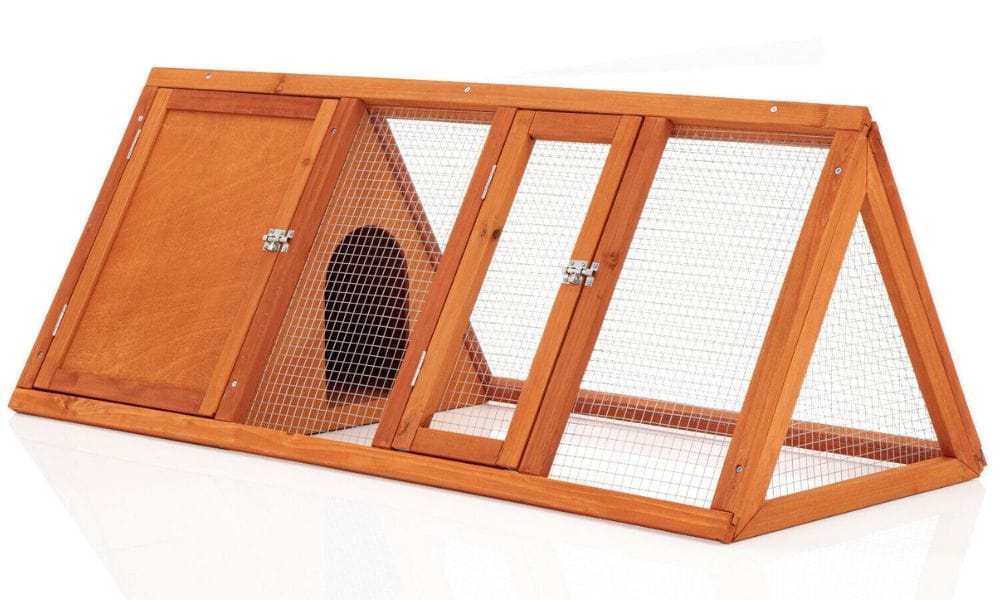
You can often find detailed a-frame rabbit tractor plans available as downloadable PDF files, sometimes spanning more than one page for comprehensive instructions.
Building a Rabbit Hutch for Small Spaces
Not everyone has the luxury of a large yard. If you’re working with limited space, a small rabbit hutch can be designed to fit on a balcony or in a small garden. These hutches often have a compact design but still provide all the necessary features for your rabbits’ well-being.
If you need inspiration or ready-made plans for small hutches, platforms like Etsy offer a variety of digital files and designs.
Accommodating Multiple Rabbits: Designing a Rabbit Hotel
If you plan to raise or house multiple rabbits, your hutch design will need to include separate compartments to prevent fighting and allow for individual sleeping quarters. You may have noticed how rabbits interact differently when housed together, which can help you design a more harmonious rabbit hotel. A rabbit hotel can be designed with several levels and compartments, each equipped with its own food and water supply.
Building a Rabbit Growout Hutch: Special Considerations for Young Rabbits
When it comes to building a rabbit growout hutch, special attention must be given to the unique needs of young rabbits. Creating a DIY rabbit hutch specifically designed for bunnies in their early stages of life ensures they have a safe, comfortable, and enriching environment to grow and thrive.
One of the most important aspects of any rabbit growout hutch is making it truly predator proof. Young rabbits are especially vulnerable, so using sturdy materials like solid wood for the frame and heavy-duty wire for the sides and floor is essential. Secure all doors and latches to prevent unwanted visitors, and consider reinforcing corners and edges for extra protection. Many rabbit breeders recommend adapting designs from chicken coops or kw cages, as these structures are already built with security in mind and can be easily modified for rabbits.
Space is another key factor. Young rabbits need plenty of room to hop, play, and develop strong muscles. When planning your hutch, opt for a larger size or even multiple levels and compartments to give your bunnies ample space to explore. Detailed plans and diagrams can help you create a layout that maximizes both floor area and vertical space, making the most of your available site. Inside the hutch, consider adding ramps or platforms for extra enrichment.
Proper ventilation and temperature control are crucial for the health of young rabbits. Make sure your rabbit hutch includes plenty of wire mesh panels for airflow, but also think about insulation and weatherproofing to protect against extreme temperatures. Using weather-resistant materials and adding features like removable covers or insulated panels can help keep the inside of the hutch comfortable year-round.
Easy access and maintenance should also be top priorities. Large doors with secure latches make it simple to reach inside for cleaning, feeding, and checking on your bunnies. Removable trays or drop-through wire floors can save time and effort when it comes to waste management. Adding features like nesting boxes and feeding stations will make daily care routines more efficient and enjoyable.
If you’re new to building rabbit hutches, don’t worry—there’s plenty of support available. Look for detailed plans, step-by-step instructions, and instructional videos online to guide you through the building process. Many websites and YouTube channels offer free or affordable resources, including cut lists, diagrams, and pictures to help you visualize each step. You can also reach out to experienced breeders or join online communities to ask questions and share your progress.
For those who like to get creative, consider using recycled materials or repurposed items to build your hutch. Not only does this approach help save money, but it’s also an eco-friendly way to reduce waste. Many DIY rabbit hutch builders have found success adapting old chicken coops, kw cages, or even unused furniture into functional and attractive rabbit growout hutches.
In summary, building a rabbit growout hutch for young rabbits requires careful planning and attention to detail. By focusing on predator proof construction, ample space, good ventilation, and easy maintenance, you can create a safe and nurturing environment for your bunnies. Don’t hesitate to consult detailed plans, watch videos, and seek support from the rabbit community as you embark on your DIY project. With the right materials and a thoughtful approach, your custom-built hutch will provide a happy home for your growing rabbits.
The Finishing Touches: Sanding, Painting, and Decoration
Once your rabbit hutch is built, the finishing touches will make it a home. Sanding down rough edges, painting or staining the wood, and adding decorations can all help to make the hutch more aesthetically pleasing and comfortable for your rabbits.
Sharing Your DIY Rabbit Hutch with the World
After all your hard work, don’t forget to post pictures of your completed rabbit hutch online. Sharing your experience on a blog post or social media can inspire others to take on their own DIY projects and provide a space for feedback and community support.
We’d love to hear from you—please leave your comments below with any feedback, suggestions, or questions about your rabbit hutch DIY project.
Summary
Building your own rabbit hutch DIY style can be a fulfilling project that provides your rabbits with a safe and comfortable home. By understanding the basics of hutch design, choosing the right materials, and incorporating features that make maintenance easier, you can create a hutch that suits your needs and keeps your rabbits happy. Remember to consider the size of your hutch, the number of rabbits you plan to house, and whether you'll need a mobile or stationary structure. With careful planning and a bit of creativity, your DIY rabbit hutch can be a success.
FAQ Section
Q: How big should a DIY rabbit hutch be? A: The size of your rabbit hutch should be determined by the number of rabbits you plan to house and their breed. Generally speaking, each rabbit should have at least 12 square feet of space to move around. If you're raising meat rabbits, you may need a larger hutch to accommodate their growth.
Q: What materials are best for building a rabbit hutch? A: Untreated wood for the frame, wire mesh for ventilation, and hardware cloth for the floor are commonly used materials. For outdoor hutches, weather-resistant materials like PVC pipe or waterproof plywood for the roof are recommended.
Q: How can I make my rabbit hutch predator-proof? A: To predator-proof your rabbit hutch, use sturdy wire mesh for all openings, secure all doors and latches, and consider adding a skirt around the hutch to prevent digging. Make sure the hutch is elevated off the ground to deter predators like dogs and foxes.

